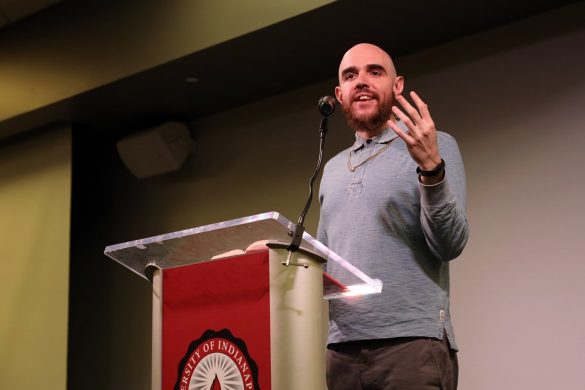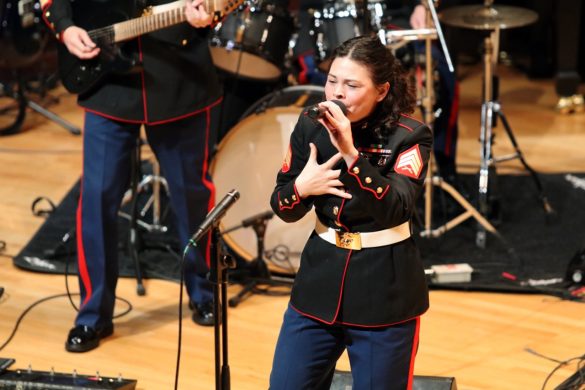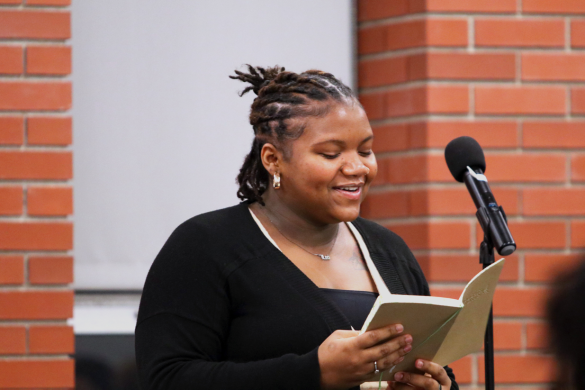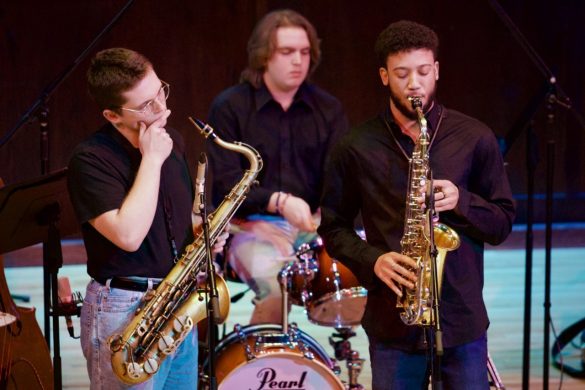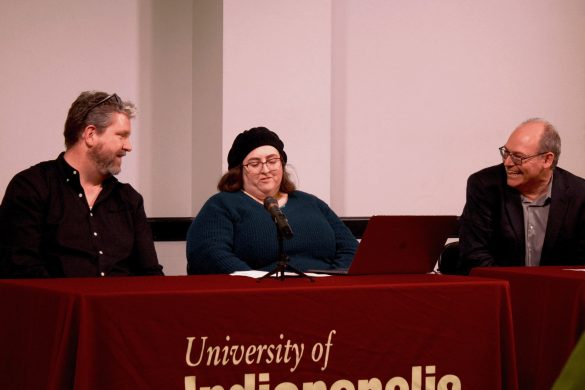According to University of Indianapolis Associate Adjunct of Art Steve Garst, having creative outlets outside of a profession gives people fuller lives. As such, one of Garst’s teaching goals is giving students an enjoyable experience with art, he said.
Garst attended Ball State University as an undergrad, according to his website. He said that BSU is where he first became involved in art. However, Garst began college as an architecture major, he said.
“[Architecture] is something that requires six years of school, and as an 18-year-old, that sounded like a scary thing,” Garst said. “So, I switched over to graphic design.”

Garst said he credits a visiting artist at BSU, Art Hazelwood, as his introduction to letterpress and printing. According to Garst, Hazelwood’s works such as stamping and bookbinding reminded Garst of his childhood love of reading, which excited him to be able to create his own prints. Garst said he began letterpress and printing in 2005 and began teaching workshops around 2007. He began teaching across various Midwest institutions in 2009, he said.
According to Garst’s website, he owns and operates his own printing studio called Happy Camper Press in Fortville, Indiana. Garst tries to work in the studio three-to-four days a week, he said. Jim Viewegh, associate professor and chair of the UIndy Art and Design Department, said he hired Garst as an adjunct faculty in 2018. Viewegh said Garst is a professional, communicative professor who always does an amazing job when favors are asked of him.
“We have a course that’s called Community Immersion in the Arts,” Viewegh said. “I had to get somebody up to speed and teaching the class within the time of winter break…. Steve talked to the former person who was more than happy to help, [the professor] got [Garst] up to speed on what was going on, and [Garst] just jumped in and took off with [the class].”
Garst now teaches a variety of courses, Garst said. These courses include Community Immersion in the Arts, Art Appreciation and some non-major classes, he said. To explain the value of hobbyist artistic experiences, Garst said that the word ‘amateur’ comes from the Latin root of amor, which means love.As such, amateur means trying to let people have things that they can love, which is what Garst hopes students take away from his classes, he said.
“It’s one of those things where I’m trying to give [students] a very relaxed experience with [art], where we can break down some of those barriers of art and just enjoy looking at it and hopefully understand what’s happening with it,” Garst said.
